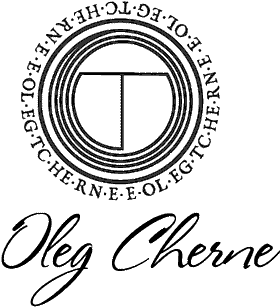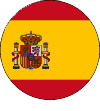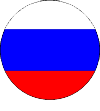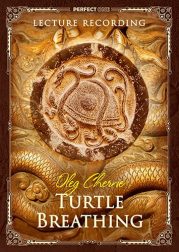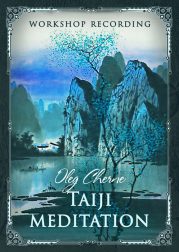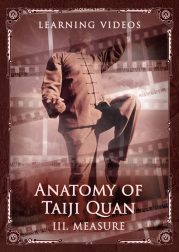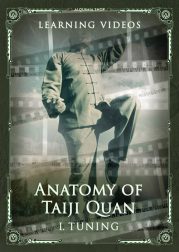Bagua Zhang
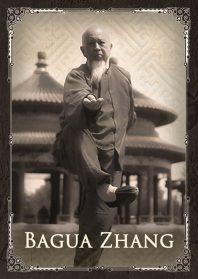
The bagua system has a long, thousand-year-old history. Legend tells that the Gua (卦) trigram-line system was initially introduced by the legendary Chinese emperor Fu Xi (伏羲, 2852–2738 BC). The methods and techniques of Gua served as a way of interacting with space.
Until the 12th century BC the bagua tradition was passed down orally, so it is difficult to determine the full conceptual scope of the bagua system. Bagua was used for fortune-telling, as a ritual, in feng shui, and as an alchemical transformation practice. Meanwhile, the applied baguazhang system (八卦 掌), which included everything, was also a martial art.
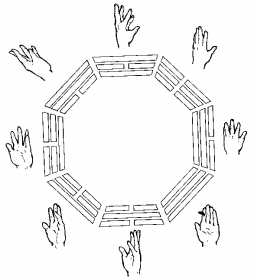
The baguazhang circular system is based on the laws of macrocosmic transformations, which have been known since the time of the legendary emperor Fu Xi in the 3rd millennium BC. These laws became the basis for all ritual Daoist systems and are divided into the four orders of Si Yao Ling.
The four orders of the baguazhang system:
- Brain Order (Xin De Yao Ling)
- Body order (Shuang Shou Yao Ling),
- Feet order (Tui Bu Yao Ling)
- Hand order (Shen Ti Yao Ling).
These four orders were formed according to the guidelines of the great “Yi Jing” treatise and are closely related to the Daoist practices for alchemical transformation, which are also represented by the Bugua concept. This art combined the trigrams with Daoist ritual and then crystallised into the baguazhang system.
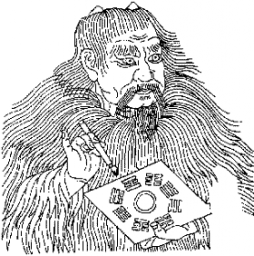
Fu Xi
Historically, one of the first mentions of baguazhang is associated with the sacred mountains Wudangshan and Emeishan. According to the chronicles, two Daoist priests, Bi Yun and Jin Yun, practised and taught this art here during the Ming Dynasty at the end of the 14th century. Be that as it may, it is difficult to find the real Bagua in centuries long past. What is more, considering that up until the 13th century, this secret knowledge was not preserved in written form, all we can do is rely on our understanding today, and not on what was written up until yesterday. What is more, we must take into account the fact that ancient Chinese thought differs considerably from modern Chinese thought (just like Daoist thought differed from the celestial).
Gradually, Baguazhang began to form not as a psychological, but as a psychophysical system. So, the issue of the history of baguazhang is simultaneously simple and difficult, and its perception depends on our experience and fundamental beliefs.
As already mentioned, the Bagua system is a matrix of knowledge about the Universe, which originated at the time of the legendary Fu Xi. Later, this system of metaphysical knowledge developed into alchemical knowledge thanks to Chen Tuan (陳 摶), as various sources indicate. Subsequently, the Bagua system developed in three distinct trends:
- Mental, i.e., philosophical;
- It is a branch of Daoist ritual linked to the rite for cosmic change;
- Alchemical.
The history of the baguazhang method is rather controversial. Dong Haichuan (董海川) is regarded as the first master that clarified the system. He is the historical figure considered founder of the Bagua method, the art of the Eight trigram palms. Dong Haichuan is also the recognized founder of the psychophysical system (alchemical system) of Bagua, which makes Baguazhang a true internal practice, an art for developing inner energy.
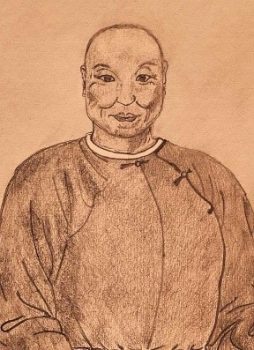
Dong Haichuan
Dong Haichuan is not only an outstanding thinker, but also a martial artist who combined the physical, energetic and mental principles that turned Baguazhang into an unrivaled art of inner work in the internal wushu styles. In terms of the fundament of its knowledge, Baguazhang surpasses two other outstanding systems, Taiji quan and Xing-yi, despite their massiveness.
Dong Haichuan introduced the idea of the eight palms, namely, “Turning palms” or “Eight trigram palms”, where each “palm” is a separate line, and together they all represent the complete concept of the Yi Jing. He created a practical application for all eight schemes of the Yi Jing, a system that has developed over thousands of years in the Daoist tradition. Thus, Baguazhang is in fact a practical representation of the eight trigrams.
Dong Haichuan’s greatness lies in the fact that he alone implemented all eight trends, which were later taken over by his eight senior students. But despite the uniform fundamental knowledge of all the lines, perhaps only Yin Fu (尹 福 – disciple of Dong Haichuan) and Li Ziming (李子鳴 – disciple of Yin Fu) were able to master all eight trigrams.
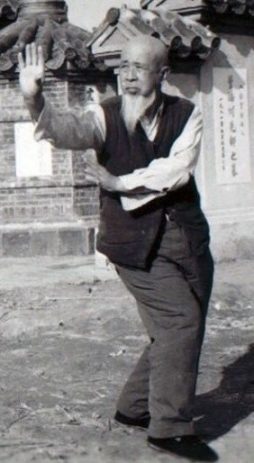
Li Ziming
Due to the fact that the lineage of Li Ziming was based on the line of Yin Fu, the first disciple of Dong Haichuan, it is safe to say that he was best informed about the teachings of all eight lineages of Baguazhang. Li Ziming, in fact, tried to reconstruct the whole scheme of Dong Haichuan, who followed the scheme of 8 lines and 64 directions.
The representatives of these lineages are the true treasures of the baguazhang system.
- Sui Yun Jiang (隋云江)
- Di Guoyong (邸 国 勇)
- Wang Tong (王 桐)
- Ma Fu Xu (馬 傅 旭)
- Sui Yunjian
- Zhang Quanliang (张全亮)
- Zhao Dayuan (赵 大 元)
- Sun Hunyan
This list should also contain the names of equally important masters like: Wang Shi Tong (王世 通), Zhang Hua Sen (張華森), Li Gong Cheng, and Ma Ling.
The author of these lines has studied with six masters who were direct students of Li Ziming, which allows me to make a modest analysis of this system.
It should be noted here that in some versions the names of Li Ziming’s and Dong Haichuan’s followers appear differently, as both of them tried to shape all 64 lines of the style and have numerous followers. However, what is important for us are the main eight lines following the eight trigrams, i.e. the core of the system.
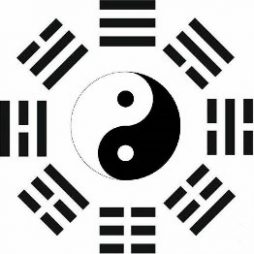
We must understand the tasks of each trigram represented by the palm as a symbol of Heaven, as it conceals the secret meaning of transformation proceeding top to bottom. Note that whereas the inner work in Taiji quan is structured bottom-to-top, Baguazhang follows the top-to-bottom principle.
Speaking about baguazhang today, we must pay great respect to all the masters, thanks to whom this knowledge has survived to this day, since each of them not only enriched this art, but also made it possible for us to learn Bagua today. So, paying our respects to Dong Haichuan and his first students, we are paying our respects to the entire Bagua system.
Let us now highlight the main aspects of the Bagua lines and their main representatives following the Dong Haichuan system, which will help us understand the system as a whole.
First palm. Kun trigram
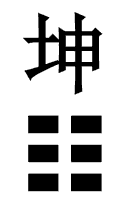 The first palm represents the Kun trigram. Turning the Kun palm.
The first palm represents the Kun trigram. Turning the Kun palm.
The main representative of this line is Yin Fu (尹 福).
Yin Fu gave clarity, meaningfulness and consistency to the knowledge received from Dong Haichuan. In fact, it was he who formalised baguazhang into a system that, to a greater or lesser extent, is accepted by everyone today thanks to his student Li Ziming.
The basis of the effort here is the absorption of the palm, roundness, absorption of the heavenly essence. The main task of the Kun line is to build the entire energetic, physical and mental system using the palm, controlling it with the stomach.
In general, this is the cornerstone of baguazhang. Just like the palm relies on the wrist, so the body relies on the lower abdomen (lower dantian). That is, the wrist is the dantian of the palm.
Second palm. Qian trigram
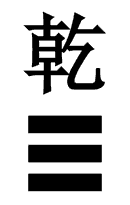 The second palm represents the Qian trigram. Turning the Qian palm.
The second palm represents the Qian trigram. Turning the Qian palm.
The main representative of this line is Ma Weiqi (馬維 棋).
The Qian Trigram, or the Qian Palm, is the art of building strength in the palm. It comes from the understanding of the Kun palm and is connected to the art of cultivating strength. Perhaps this is the most entertaining, difficult and time-consuming direction in Bagua. The Qian palm opens and helps nourish us with heavenly essence. The first two palms are the first and second inner doors of the Baguazhang.
Third palm. Kan trigram
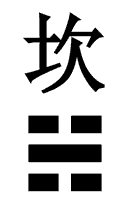 The third palm represents the Kan trigram. Turning the Kan palm.
The third palm represents the Kan trigram. Turning the Kan palm.
The main representative of this line is Zhang Zhao Dong (張兆東), another version cites the name Shi Ji Dong (使 計 棟).
Of course, today it is difficult to reliably identify the masters representing a certain line, but this is not the point here, since our focus is the cosmogonic concept and approach to the training system as a whole, as baguazhang is not a set of techniques and exercises, but a serious methodological system.
The Kan trigram is the third inner door of bagua. This direction requires sufficient time and effort to bring strength into the interaction with the Shen spirit and to understand the revelation of inner strength. This line is complex and secret, and it is understood only once the inner axis has been formed. The Kan palm is associated with the effort of absorption.
Fourth palm. Li trigram
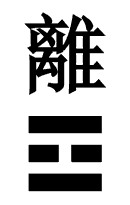 The fourth palm represents the Li trigram, or Turning the Li palm.
The fourth palm represents the Li trigram, or Turning the Li palm.
The main representative of this line is Cheng Ting Hua (程廷華).
The Li palm is the fourth inner door of Bagua. This line focuses on the art of internal energy transfer. Thus, the Li line represents that which is not visible from the outside. It can be conceptually defined as a scheme for complete energy distillation and is thus related to Daoist alchemy.
This inner work is expressed in the idea of sliding feet (spinning the axis) and capturing energy with the palms. The Li line is characterised by twisting and unwinding; opening and stability; alternation of hardness with softness. This allows you to push; hold; connect; brace; transfer; fasten; divide; and penetrate. All this is the result of a spiral force that is infinite in its changes. The Li palm can be mastered only by those who have already created the axis, using the Qian and Gen palms.
The Li palm is a palm with a dragon’s claw. The thumb is drawn, the index finger is straightened, the four fingers are slightly brought together, the palm is bent, the back of the palm is grooved, the palm is turned into space. With the help of this palm, you can generate jing energy, which is the basis of the inner strength of the Bagua palm (Qin na).
In terms of endurance, this requires both toughness and softness; clasping and separating; twisting and untwisting; compactness and smoothness; attention to the strength of the back (roundness). Learning the Li palm can help us to understand and form the eight movements of the palm: flat palm; collecting palm; energetic palm; back palm; rotating palm; penetrating palm; rolling palm; unwinding palm.
This special attitude towards the palm can also help us to understand the inner change and the fundamental rules of the Bagua practice. These are the eight Bagua palm schemes that lead to the knowledge of 64 palm changes. If we want to understand the palm through energy, then our energy must have support in the centre.
Fifth palm. Xun trigram
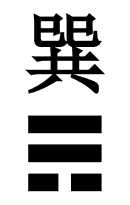 The fifth palm represents the Xun trigram. Turning the Xun palm.
The fifth palm represents the Xun trigram. Turning the Xun palm.
The main representative of this line is Ma Gui (馬 貴).
The fifth line develops the back of the hand. Although this line is a tangent axis, it is important both for those who start from scratch and for those with sufficient experience in the practice. The goal of the Xun palm is to connect the body to the legs. Particular attention is paid to the lower part of the legs and the thighs.
The emphasis here is on walking and the lower part of the body. This means that the strength of the whole body is concentrated in the hips and is transmitted to the shins and feet using the latent strength of the bones and the tendons – “slow, concentrated walking in a circle with the effort of the horse’s croup” (the thighs). In the hand, this force is then manifested in the wrist and elbow.
The position of this palm radically transforms the large tendon lines from the neck to the feet, strengthens the entire body and, most importantly, creates a special power in the wrist, which is important for a piercing strike with the palm. The body thus formed resembles a hurricane that cannot be touched. Development leads to the formation of a light body, which does not seem to touch the ground.
Ma Gui inherited from Dong Haichuan the special knowledge of meditation and energy work, including the special practice of “inner dantian.” The core of his fighting power was the seated bagua meditation, a pure alchemical practice, which was also very important to Yin Fu.
Sixth palm. Zhen trigram
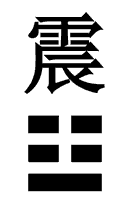 The sixth palm represents the Zhen trigram. Turning the Zhen palm.
The sixth palm represents the Zhen trigram. Turning the Zhen palm.
The main representative of this line is Song Chang Rong (宋長榮).
The Zhen line represents the art of changing the palm to reach the inner door, or simply put, linking the movement of the palm to the axis of the body and dantian. It is this “simple palm change” that mysteriously strengthens the true inner mastery.
Unless the student understands this, he tends to look for a longer bagua choreography, since the simple change of the palm and the repetition of “simple exchange of palms” sooner or later begins to irritate him. This is the reason why this Bagua style is not widely spread, due to the lack of patience to achieve inner discipline in the practice.
The sixth line is the sixth inner gate of Bagua, which is the portal to the world of inner change.
Seventh palm. Gen trigram
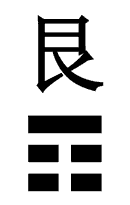 The seventh palm represents the Gen trigram. Turning the Gen palm.
The seventh palm represents the Gen trigram. Turning the Gen palm.
The main representative of this line is Liu De Kuan (劉德 寛).
The seventh line, or the seventh inner gate of Bagua, gives direction to the force in Bagua, where direct application of force is important. Liu De Kuan worked hard on this, enriching the methods of Qin na (擒拿 – the art of capture and control) with the skills of using a spear and a halberd.
It also involves the directional bagua movement along a line, which is known today as the practice of 64 palms Liu Shi Si Shou (六十 四 手). This practice consists of both circular and linear movements. Movement along a line is associated with a specific internal and mental task. According to one version, this is the joint work of Dong Haichuan, Cheng Tinghua and Sun Lutang (孫祿堂 – the founder of the Sun Taiji quan style), which was then developed further by Liu De Kuan.
The Gen trigram line works with the long energy, direct movement, where the foundation of the movement lies behind the crown. The axis is inside and energy is brought in from outside the body. This line was further developed by Liang Zhenpu (梁振 蒲) and Li Ziming. This straight line also gave rise to directionality of the fist (known as the Continuous Fist).
Eighth palm. Dui trigram
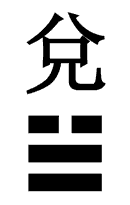 Represents the Dui trigram. Turning the Dui palm.
Represents the Dui trigram. Turning the Dui palm.
The main representative of this line is Liu Feng Chun (劉風春).
This is the eighth inner gate of bagua. The breathing palm. This line focuses not on the form but on the breath. Perfection here is achieved only after mastering the inner breath.
Support in the feet. The Dui line focuses on penetration and support, revealing the force of the earth. This line emphasises not so much on the technique itself but rather on the support in the technique. It teaches diligent improvement, the ability to devote yourself to the learning process, and, most importantly, helps you understand what you are doing.
We should also note that the teaching process focuses on revealing the nature and capabilities of the student. This helps identify the trigram that the student takes as a basis. This is also the reason for the abundance of directions in Baguazhang.
Video
Bagua Zhang: teaching of harmony
